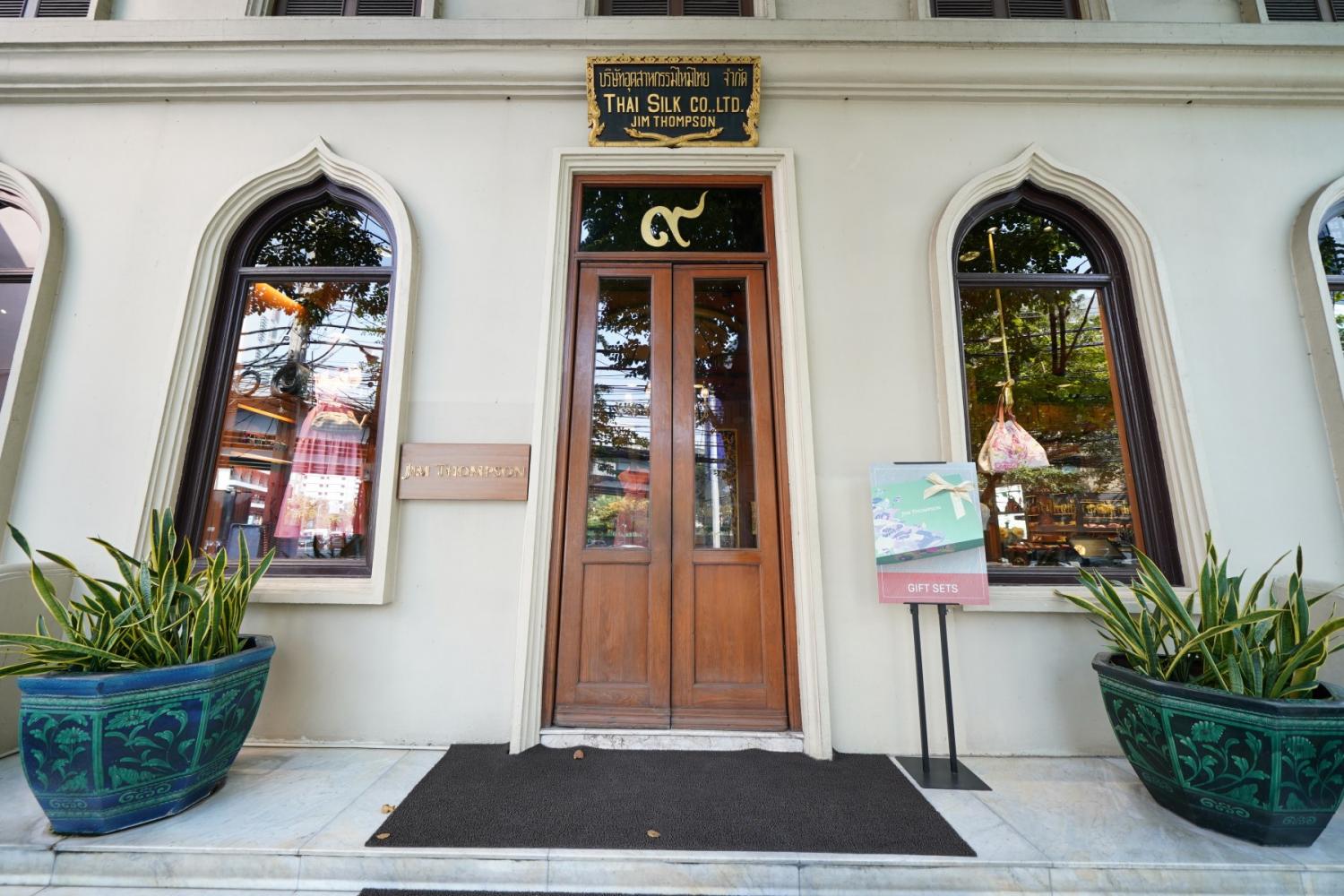
In Jim Thompson: The Unsolved Mystery, William Warren describes the Thai Silk Company on Surawong Road as a modest little shop with an air-conditioned sales room on the ground floor, hot cramped offices and store rooms on the upper floors.
Nevertheless, in the early 1950s, the Thai Silk Company was a Bangkok landmark and shopping destination for many foreign tourists after they checked into their hotels.
Today the building, rich in history, still houses the largest flagship store while the silk business has expanded to include fashion and home furnishing, evolving Jim Thompson as a global lifestyle brand.
The 1st floor showcases the new fashion and accessories collections amid original interior design, enhanced by a chandelier and sculptures that reflect the founder's love of art.
Against Chinese paintings hanging on the wall, a flight of stairs takes visitors to the spacious 2nd floor, which spreads over the main building and car park.
The front section is dedicated to the women's and men's collections. With updated silhouettes, the ready-to-wear pieces include those in cotton or linen, fitting for the warm climate. Besides signature prints, the designs feature solid colours that equally enliven the wardrobe.
The menswear includes polo shirts, whose collars feature a dash of silk. The 2nd floor is centred by a display of scarves and accessories that further underline the silk heritage.

Jim Thompson devoted himself to the development and promotion of local textiles, which earned him the title "King of Thai Silk".
A native of Greenville, Delaware, the US-born Thompson long had an interest in textiles. First, his father was a textile manufacturer, and second, his passion deepened while working on the board of the famous Ballet Russe de Monte Carlo.
During World War II, Thompson worked for the Office of Strategic Services (the precursor of the CIA) and was stationed all over the world. In the mid-1940s, he arrived by military plane in Thailand, where he later discovered an enclave of Thai weavers who lived in an idyllic small community called Ban Krua, in the heart of Bangkok.
Following the success of hand-woven silks exported to New York, the American entrepreneur opened his first store on Surawong Road in 1950. While holidaying in Malaysia's Cameron Highlands, he disappeared on Easter Sunday, 1967, which remains an unsolved mystery.
Pictures of his endeavours are displayed in the Hand Weaving Gallery with a century-old creaky floor, located on the back of the 2nd floor.

The looms on display are from the Jim Thompson Farm, in Pak Thong Chai district, Nakhon Ratchasima. The farm promotes a better understanding and appreciation of the region's rural culture and roots.
Likewise, the Hand Weaving Gallery looks back on how Thompson rediscovered a lost art and revived Thai silk. It also pays tribute to the craftsmanship behind the handmade scarves and shawls.
The artisanal weaving also delivers beautiful fabric for home furnishing products, displayed in an area next to the gallery.
The Custom Tailoring Studio allows customers to choose from the solids or prints in making cushion covers and other items for the home.
The service is unique to the flagship store, which entices visitors to discover the latest collections as well as the history of the brand.
Jim Thompson flagship store is located at 9 Surawong Road in Bang Rak, Bangkok. For information call 02-632-8100.










